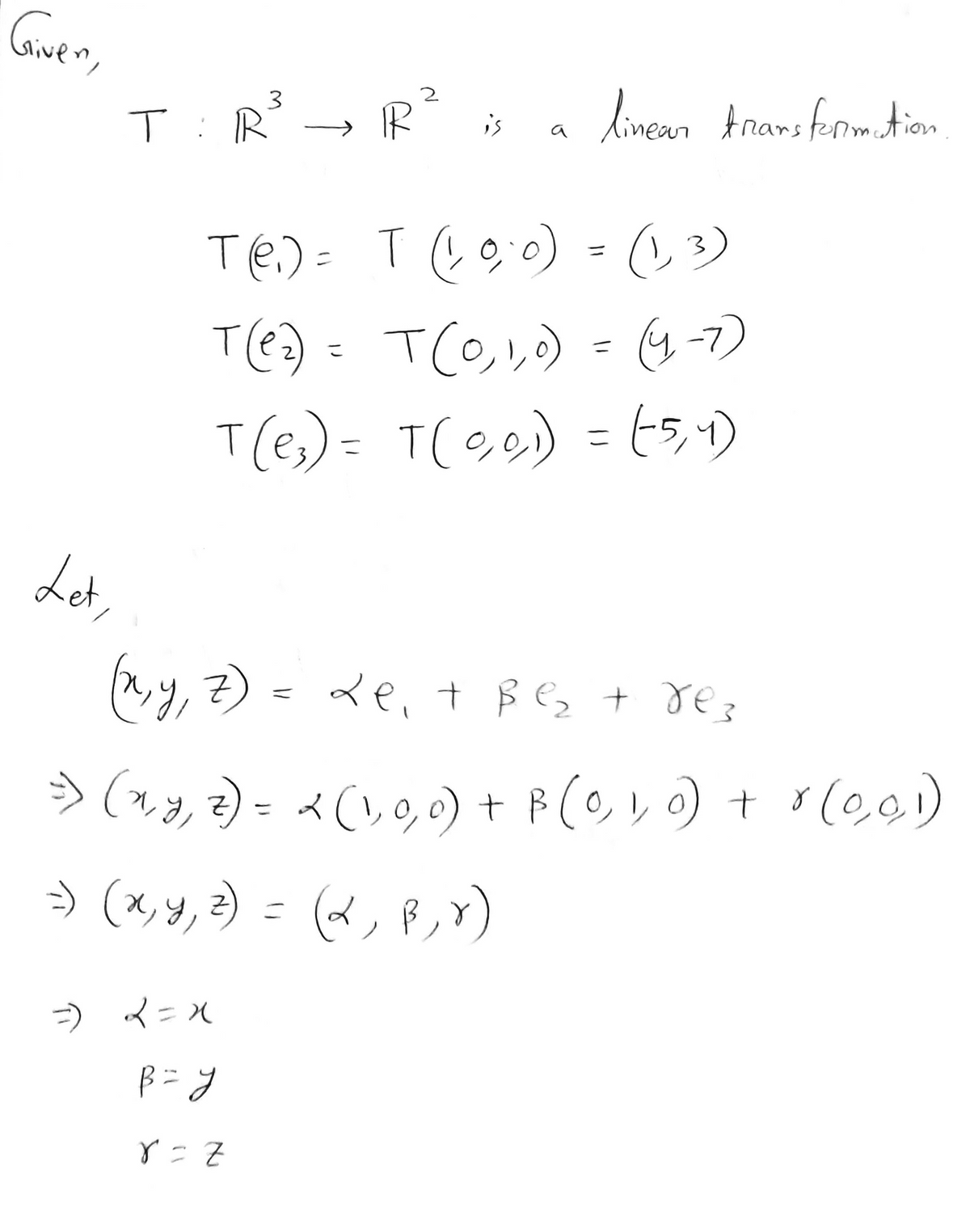Problem 2: Let T : R³ → R² be a linear transformation such that T(e1) = (1,3), T(e2) = (4, –7), and T(e3) = (-5,4), where e1, @2, e3 are the columns of the 3 x 3 identity matrix. Is the transformation one-to-one? Is it onto?
Problem 2: Let T : R³ → R² be a linear transformation such that T(e1) = (1,3), T(e2) = (4, –7), and T(e3) = (-5,4), where e1, @2, e3 are the columns of the 3 x 3 identity matrix. Is the transformation one-to-one? Is it onto?
Advanced Engineering Mathematics
10th Edition
ISBN:9780470458365
Author:Erwin Kreyszig
Publisher:Erwin Kreyszig
Chapter2: Second-order Linear Odes
Section: Chapter Questions
Problem 1RQ
Related questions
Topic Video
Question

Transcribed Image Text:Problem 2: Let T :R³ → R? be a linear transformation such that T(e,) = (1,3), T(e2) = (4, –7), and
T(e3) = (-5, 4), where e1, e2, ez are the columns of the 3 x 3 identity matrix. Is the transformation one-to-one? Is
%3D
it onto?
Expert Solution
Step 1

Trending now
This is a popular solution!
Step by step
Solved in 3 steps with 3 images

Knowledge Booster
Learn more about
Need a deep-dive on the concept behind this application? Look no further. Learn more about this topic, advanced-math and related others by exploring similar questions and additional content below.Similar questions
Recommended textbooks for you

Advanced Engineering Mathematics
Advanced Math
ISBN:
9780470458365
Author:
Erwin Kreyszig
Publisher:
Wiley, John & Sons, Incorporated

Numerical Methods for Engineers
Advanced Math
ISBN:
9780073397924
Author:
Steven C. Chapra Dr., Raymond P. Canale
Publisher:
McGraw-Hill Education

Introductory Mathematics for Engineering Applicat…
Advanced Math
ISBN:
9781118141809
Author:
Nathan Klingbeil
Publisher:
WILEY

Advanced Engineering Mathematics
Advanced Math
ISBN:
9780470458365
Author:
Erwin Kreyszig
Publisher:
Wiley, John & Sons, Incorporated

Numerical Methods for Engineers
Advanced Math
ISBN:
9780073397924
Author:
Steven C. Chapra Dr., Raymond P. Canale
Publisher:
McGraw-Hill Education

Introductory Mathematics for Engineering Applicat…
Advanced Math
ISBN:
9781118141809
Author:
Nathan Klingbeil
Publisher:
WILEY

Mathematics For Machine Technology
Advanced Math
ISBN:
9781337798310
Author:
Peterson, John.
Publisher:
Cengage Learning,

